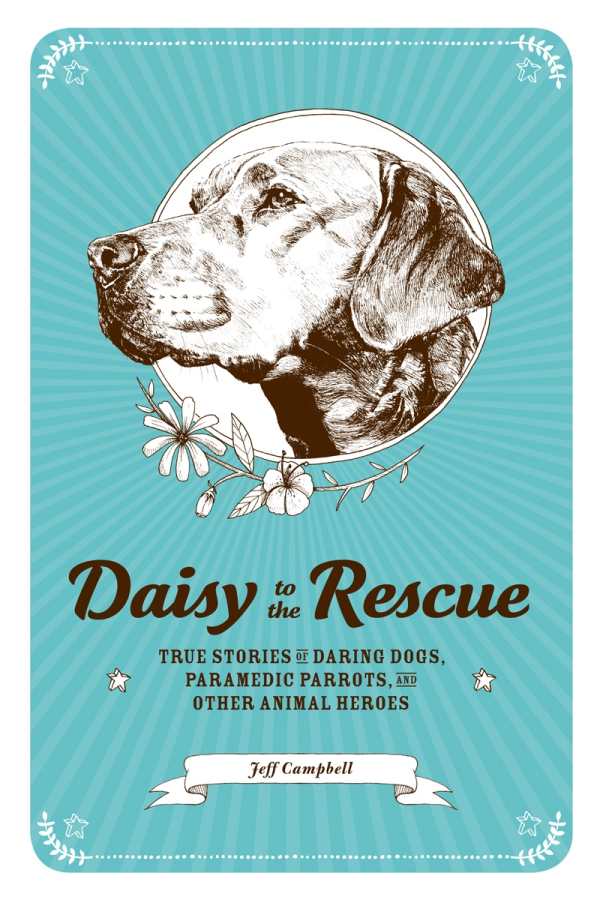Daisy to the Rescue
True Stories of Daring Dogs, Paramedic Parrots, and Other Animal Heroes
- 2014 INDIES Winner
- Bronze, Young Adult Nonfiction (Children's)
Are animals compassionate? Campbell finds fifty reasons to believe they are.
Jeff Campbell explores the idea of animal compassion in his book Daisy to the Rescue: True Stories of Daring Dogs, Paramedic Parrots, and Other Animal Heroes, where he details fifty accounts of animals risking their lives for humans and presents scientific findings that show animals are capable of kindness.
To test whether animals act out of compassion or an instinctual response, Campbell evaluated hundreds of stories from around the globe, whittling the number of entries down to fifty, basing his criteria on credibility, reliable witnesses, and documentation.
The book is helpfully separated into four sections, including domestic animal bravery and legendary acts of animal heroism. Some tales are accompanied by short stories, anecdotes, and scientific findings. The first section is filled with familiar stories of dogs, cats, and rabbits saving their owners from fires, robbers, and diabetic seizures. These stories are not particularly surprising, yet the author manages to weave the tales with deft and quick storytelling.
Campbell puts his time as a guidebook writer for the Lonely Planet series to good use by keeping a fast pace while covering salient parts of the story. The following three sections deal with animals trained to heal, wild animals, and folklore. While the overall structure is clear and organized, it might have made more sense to put the section on legendary tales first, to set up Campbell’s theory that animals have always had compassionate instincts, and that these stories have been documented since at least the seventh century BC.
Some of the more inspiring tales are found in the middle sections, where we meet heroic dogs of 9/11 who lead their owners out of the collapsing towers, and a German shepherd who found the last survivor at Ground Zero. Campbell also describes the first time captive dolphins were used to soothe people with debilitating ailments like congenital heart failure and cerebral palsy. The author might have provided a more complete story if he had included evidence supporting the efficacy of dolphin-assisted therapy, especially since so many of the other stories in the book are supplemented with scientific facts explaining why animals behave the way they do.
Wild animal rescues are the most astonishing stories. Campbell describes wild dolphins saving ocean swimmers from a shark attack, elephants warning of an impending tsunami, and a lion rescuing a child from kidnappers. This is the strongest section in defense of animal compassion existing naturally, because these examples demonstrate wild animals saving humans when there is no tangible benefit to the animal for doing so.
The endnotes are impressive; each story includes at least four citations, and though many are from secondary sources, they are from reputable journals and newspapers. A thorough bibliography offers further inquiry into this fascinating and still-evolving world of animal intelligence and compassion. Campbell’s compelling examples and engaging storytelling style make strong cases for animal altruism, and they encourage further examination of everyday human-animal encounters.
Reviewed by
Barbara Nickles
Disclosure: This article is not an endorsement, but a review. The publisher of this book provided free copies of the book and paid a small fee to have their book reviewed by a professional reviewer. Foreword Reviews and Clarion Reviews make no guarantee that the publisher will receive a positive review. Foreword Magazine, Inc. is disclosing this in accordance with the Federal Trade Commission’s 16 CFR, Part 255.

